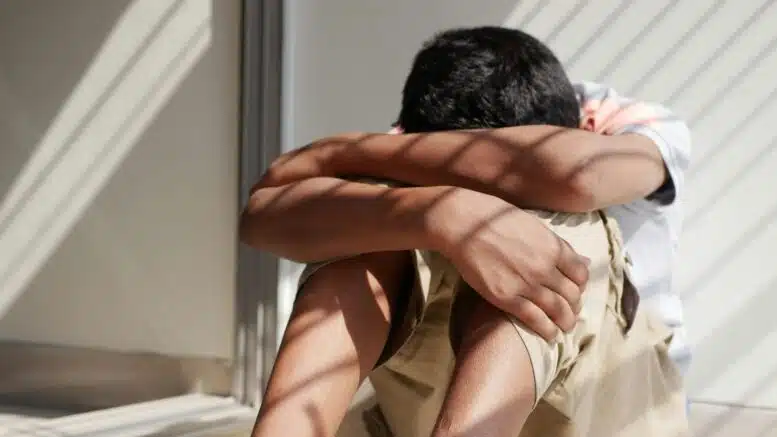By Jennifer Fernandez
Deana Joy is in Washington, D.C., this week with other North Carolina colleagues who work with families affected by sexual assault, child abuse, domestic violence and other trauma.
She’s walking the halls of Congress, asking for improvements to the funding stream for the Victims of Crime Act. The money — which has historically come from fines and penalties from convictions in federal cases — gets sent to states to pay for counseling, shelter, forensic interviews and other trauma-informed care for crime victims.
Funding through the act, also called VOCA, has been decreasing in recent years at the same time as the number of people seeking help has increased, Joy told the North Carolina Governor’s Crime Commission last week.
Joy, executive director of Child Advocacy Centers of North Carolina, said demand for services has increased by 74 percent in the past decade. Last year, the state’s 55 centers saw more than 12,000 new victims of sexual abuse. She said about 65 percent of cases handled by the centers involve sexual abuse, with the rest involving felonious physical abuse and children who have witnessed homicides.
“We are truly talking about some of the highest level abuse rates for kids and families,” she said.
The decline in the federal funding has led Child Advocacy Centers in other states to lay off staff or close, Joy said. She said North Carolina is at an inflection point.
“We have to start pivoting in a different direction in order to save victim services across the state of North Carolina,” Joy said.
Waning funds
The Victims of Crime Act of 1984 established the Crime Victims Fund, which is financed through federal criminal fines, forfeited bail bonds, penalties and special assessments.
Some of the money goes to special programs like the Victim Notification System, which keeps victims abreast of court hearings and the status of offenders’ custody and status, and to victim-witness coordinators, who help victims navigate the justice system.
The majority of the funding is sent to states to compensate crime victims and provide services to help them. Compensation funding is based on how much states awarded in the preceding fiscal year. For assistance funding, each state gets a base of $500,000, and the rest is calculated based on population and how much is available in the fund.
The fund balance has been steadily dropping since 2017. Distributions to states began to decrease the following year and have fallen in all but one year since then.
In 2021, Congress passed what became known as the “VOCA Fix” to shore up the fund with a new pot of money. It requires monetary penalties from federal deferred prosecution and non-prosecution agreements to flow into the Crime Victims Fund. That has added $1.42 billion to the fund through March this year.
Despite that new stream of revenue, the fund continues to peter out.
Last fiscal year, the fund allocated $1.3 billion to states for victim services and $169.9 million for compensation.
This fiscal year, which runs through September, about $778.9 million will go to states for victim services and $176.1 million for compensation.
While North Carolina’s compensation funding is expected to hold steady at about $3.7 million this year, that’s diminished from about $4.8 million two years ago, federal data shows.
Funding for state services saw a sharp decline, from $42.5 million last year to $24.6 million this year.
Child Advocacy Centers
Victims of Crime Acts grants are the main federal funding source for Child Advocacy Centers and victim service providers, according to the National Children’s Alliance.
The centers serve more than 381,000 children across the country annually, the organization said.
The deep cuts in the federal grants have led to a loss in mental health services for children and cuts to the number of victim advocates who work with families to connect them to needed services, the National Children’s Alliance said.
“What we do know for Children’s Advocacy Centers is that they have been proven to be best practice in trauma-informed response to child abuse and that in their absence, children are not getting the services that they need in order to properly heal and move forward from adverse childhood experiences,” Joy said.
Some aid has come from state coffers.
The North Carolina General Assembly included $3 million in recurring funds for the Child Advocacy Centers in each of the next two years in the budget passed last September. Joy said that gets annual state funding back up to $10 million annually, where it had been previously.
Gov. Roy Cooper included $6 million for the centers and other victims services in his $34.5 billion proposed budget released in April as a direct response to the decline in federal funding. The state House and Senate have not yet released their spending plans for the coming fiscal year, which begins on July 1.
Cooper told the Governor’s Crime Commission last week that he’s also urging Congress to restore funding to previous levels.
He said North Carolina needs to support victims of crime to help them with the “pain and the trauma that they’ve suffered.”
“It’s made a real difference when we’ve been able to make those investments,” he said.
Joy said the General Assembly has been looking at what other state legislatures have done to address the issue. She believes state lawmakers will find a way to help.
“I don’t think any of them want to see victims not have access to services in their community,” she said.
Victim programs affected
Along with the loss in funding, domestic violence programs are seeing a drop in volunteers — even as more people are seeking help, said Carianne Fisher, executive director of the North Carolina Coalition Against Domestic Violence.
The number of volunteer hours in domestic violence programs dropped from 290,393 in 2018-19 to 186,180 three years later, Fisher told the Governor’s Crime Commission.
The number of people who received help increased from 60,214 to 75,556 in that same time period.
The Orange County Rape Crisis Center has reduced staffing and programming because of the decline in federal support, Executive Director Rachel Valentine said.

The crisis center helps victims with a variety of needs, from housing and transportation to finding child care and intervening with landlords or creditors.
”Our job is to stand in the gap when they are navigating systems that are … not designed with them or their trauma in mind,” Valentine told the Governor’s Crime Commission.
She said reduced funding has led to fewer child sexual abuse prevention trainings in local schools. Those will be cut even further this year.
The center also ended a community outreach and engagement program for Hispanic community members and a trauma care collaborative that focused on developing the capacity of local therapists to serve sexual assault survivors.
“We’re now at a point where our infrastructure and our safety net is the most underfunded thing about us,” she said. “So we are operating with diminished infrastructure support, diminished administrative support and completely depleted reserves as a way of serving the community.”
A new funding source
A proposed bill in the U.S. House of Representatives seeks to amend the Victims of Crime Act to add another revenue stream.
The new money would come from the False Claims Act, under which prosecutors can collect three times the monetary damages against anyone convicted of defrauding the government, along with any penalties.
While the Victims of Crime Act already allows that source to be tapped, the bipartisan HR8061 — or Crime Victims Fund Stabilization Act of 2024 — adds the False Claims Act to the sources of revenue deposited into the Crime Victims Fund.
Last fiscal year, the government collected $2.68 billion under the False Claims Act.
Not all of that would go into the Crime Victims Fund if HR8061 became law. Some of the money goes to the defrauded agencies and some to the whistleblowers who alert officials to crimes. The government paid $349 million to whistleblowers last fiscal year. The rest, however, typically has not been designated for a specific purpose.
Joy said the hope is that adding that funding stream would help stabilize the Crime Victims Fund.
The proposed bill has gained supporters from both sides of the aisle since being introduced on April 18, including nine more co-sponsors last week. It remains in the House Committee on the Judiciary, where it was referred on the same day it was introduced.
Three of the co-sponsors come from North Carolina, all Democrats — Reps. Don Davis (NC-1), Jeff Jackson (NC-14) and Deborah Ross (NC-2).
“We hear more people are going to sign on,” Joy told NC Health News on Monday, but she added she’s not sure when the bill might get discussed in committee.
She’s meeting with Sen. Thom Tillis (R-NC) to talk about whether the Senate could craft a similar bill or he could work on directing other funding to the state for victim services. She said he has been a longtime supporter of Child Advocacy Centers and their work.
Monika Johnson-Hostler, executive director of North Carolina Coalition Against Sexual Assault, said members of Congress are being creative on ways to backfill the Victims of Crime Act fund to continue providing direct services to victims.
“These are our people. They’re our community. They’re our family that are hurting,” she told the Governor’s Crime Commission last week.
If something isn’t done to fix the victims’ fund, she said, “we are going to leave people behind in more ways than one.”












